To prepare for a tsunami, know your evacuation zone, build an emergency kit, create a family escape plan, and stay alert to official warnings.
In the United States, tsunami risk is the greatest for states and territories with Caribbean and Pacific coastlines. If you're wondering how to prepare for a tsunami, you'll need to find multiple ways to receive warnings, make an emergency plan, map out routes to safe places, and prepare portable disaster supply kits.
Jackery Solar Generators is a reliable charging solution that can power essential appliances during and after a tsunami. Official warnings are often broadcast through TVs, radios, and wireless emergency alerts. The solar generator can help you keep these appliances powered, especially during power outages.
AI Takeaways
- Most tsunamis are triggered by undersea earthquakes, but they can also result from volcanic eruptions or underwater landslides.
- You should know about the tsunami evacuation routes, identify safe zones above sea level, and create a family emergency plan to prepare for a tsunami.
- Tsunamis often knock out grid power for days. Jackery Solar Generators are essential home backup solutions that can power critical household appliances, such as refrigerators, lights, etc., when the grid is down.
- What to do during and after a tsunami hits your area.
Latest News About Tsunami
On August 17, 2025, a massive landslide in the Endicott Arm area near Juneau, Alaska, triggered a local tsunami with waves measuring between 10 and 15 feet high. The event occurred early in the morning when steep, unstable terrain gave way, sending powerful surges through the fjord. Even though the tsunami was localized, it highlighted how quickly natural changes in glacial and mountainous regions can generate dangerous waves.
As of the latest reports from news outlets, no injuries or fatalities have been confirmed, though boaters and campers in the area described sudden water level changes and strong surges. The waves caused some disruption to marine activity and raised concerns about potential interruptions to local traffic and tourism. Eyewitness accounts captured the force of the event, underscoring the risks for communities and visitors in Alaska’s coastal and fjord regions.
Scientists and government agencies continue to monitor the affected area, warning that the exposed scar from the landslide could lead to further rockfalls or smaller tsunamis. While this incident was not as destructive as historic mega-tsunamis, it serves as a powerful reminder of the unpredictable nature of geological hazards.
Understanding Tsunami Facts
A tsunami is a series of powerful ocean waves accompanied by unusually strong currents. It can strike any ocean coast at any time and might pose a serious threat to property and life. Tsunamis are ocean waves triggered by volcanic eruptions, submarine landslides, large earthquakes, and onshore landslides.
According to the WHO, tsunamis caused more than 250,000 deaths globally between 1998 - 2017. In 2004, over 227,000 deaths happened due to the Indian Ocean tsunami. In other words, tsunamis are long waves generated by a sudden and large displacement of the ocean that can be a major threat to life and property.
While there are many causes of tsunamis, the most common are large earthquakes below or near the ocean floor. These occur infrequently, and most are small and nondestructive.

What Are The Tsunami Alerts in the US?
The official tsunami alerts in the US are often broadcasted through different mediums, like TV, radio, and wireless emergency alerts. You may also receive warnings, advisory, watch, and information statements. Here's a table indicating what these alerts mean and what you should do:
|
Tsunami Alert |
What It Is |
What To Do |
|
Information Statement |
An earthquake occurs, but there's no threat. Or, the earthquake is far away, and the threat has not yet been determined. |
You must monitor local emergency information. |
|
Watch |
A distant earthquake occurs, and there's a possibility of a tsunami. |
You should monitor local emergency information and be prepared for necessary actions. |
|
Advisory |
You may expect a tsunami with dangerous waves or currents. |
Stay out of the water, beaches, and waterways, and follow local officials' instructions. |
|
Warning |
Widespread flooding caused by the tsunami is expected. There are chances of dangerous coastal flooding and currents. |
You should immediately take action and move to high ground or inland. |
There are two main types of tsunami warnings: official and natural. They are equally important, but how you respond to and prepare for them may differ.
Official Warnings
Official tsunami warnings are often broadcast by marine radio, local radio, television, NOAA Weather Radio, NOAA websites, and wireless emergency alerts. Sometimes, you may also receive official warnings via outdoor sirens, text message alerts, local officials, and telephone notifications. It is recommended that people prepare for evacuation and move to a safe place inland or on high ground.
Natural Warnings
A natural warning is the only warning you may receive when a tsunami is on its way. The warnings include strong or long earthquakes, unusual ocean behavior, and a loud roar. The ocean might look like a wall of water, or the water could drain away suddenly. Any of these warnings means a tsunami can arrive within a few minutes. You'll need to protect yourself from the earthquake by moving quickly to a safe place inland or on high ground.
How to Prepare For A Tsunami?
There could be little to no tsunami warning to evacuate, and you might need to stay away from your home until the officials issue an All Clear alert. It could last several days or hours, depending on the damage caused and the severity of the tsunami. Here's how to prepare for a tsunami:
Know Your Risks
The first thing to do is to find out if your home, workplace, school, or any place you visit is in a tsunami hazard zone. It's worth noting that local tsunamis pose a greater threat, and there is less time to get to a safe place.
Make Emergency Plans
You'll need to prepare an emergency plan for the tsunami that includes different ways to receive tsunami messages and plans for family communication, as well as put together all the important portable disaster supplies kits.
Plan for Evacuation
You need to start by learning existing evacuation routes or finding new ways from home, workplace, or other places you often visit to safe places inland or on high ground.
Remember, you should plan to evacuate on foot if you can because roads may be damaged or there might be traffic jams. You must also understand how to prepare for a tsunami before, during, and after.
For example, stay informed during the tsunami. Once it's over, local officials will check out the damage and decide when it's safe to return.
Plan for Safe Boating
If you're on a boat and receive a tsunami warning, it is recommended that you follow safety precautions.
- If you're in the harbor and receive a warning, immediately leave the boat and move to a safe place on land.
- On the other hand, if you are at sea and then receive a warning, move to a safe depth and stay safe from harbors that are under warning. Officials will inform you once the danger has passed.
Prepare the Emergency Supply Kit
When a tsunami occurs, you may need to survive on your own for a few days. A tsunami emergency supply kit is a collection of basic supplies, such as food, water, and other items, that you may need in the event of an emergency. Here's a list of must-have emergency essentials you should have:
- Water (at least one gallon per person per day)
- Food (including several day supply of non-perishable food)
- Battery-powered radio or an NOAA Weather Radio to get tsunami alerts
- Flashlights
- First aid kit
- Whistle to signal for help
- Extra batteries
- Local maps
- Cell phones with chargers
- Backup batteries like Jackery Solar Generators
- Wrench or pliers
- Plastic sheeting and duct tape
- Dust mask
- Emergency blankets
- Pet food or extra water for your pet
- Clothing for all household members
- Devices such as laptops, mobile phones, and chargers
- Waterproof poncho
You can download the tsunami checklist PDF and keep it handy. Whether on land or on a boat, investing in a reliable backup generator like Jackery Solar Generator is vital. It can help you keep televisions, radios, mobile phones, etc., powered outdoors or during a power outage. This helps ensure you have the essential gadgets charged for receiving tsunami warnings.
For Lynne, power outages used to feel like tests she had to endure alone, especially during hurricanes that plunged her Pinellas County neighborhood into silence for days. While others evacuated, she stayed behind, relying on flashlights and willpower until she discovered Jackery. With her Jackery product, those long, anxious hours turned into manageable stretches of normal life. The freezer kept humming, the lights stayed on, and her fan cut through the heavy Florida heat. Read Lynne's Jackery Story to see how she manages long-term power outages with Jackery.
Practice Evacuation Drills
Tsunami evacuation drills are one of the best methods for practicing evacuation from risk areas to safe places. The key objective of evacuation drills is to train, assess, and inform about tsunamis. They can also help you understand how to implement evacuation instructions in real-life scenarios. Practice the evacuation drills so everyone can evacuate safely and quickly when the tsunami hits. It's recommended to plan and practice at least two ways out of the neighborhood in case one travel route gets blocked.
Prepare for Pets or Livestock
When you prepare for a tsunami, you'll also need to consider your pets and livestock. You can start by checking the welfare arrangements for pets or welfare during an emergency. If there's a need to move to a safer place with pets, make sure to keep the supplies ready. Here's a list:
- Old newspaper or toilet litter
- Bedding blankets or towels
- Non-perishable pet foods for many days
- Comfort items, such as treats or toys
- Essential medications and vet contact details
- Photo of you and your pet
- Contact details
Additionally, you need a plan to care for livestock. When moving livestock, consider fitting gates on internal fences and mark gates or water locations on the map. If you're not at home and tsunami warnings occur, make sure to talk with family or neighbors to make some arrangements for livestock. Let them know where they can find the emergency kit.
Prepare for Property
You should also prepare your home or property for unexpected emergencies like tsunamis. Start by checking your home, contents, and car insurance coverage and making sure you have it handy. Then, identify where and how you can turn off the gas, electricity, and water main lines. If there are any loose items, secure them to avoid damage.
Jackery Solar Generators for Emergencies
Jackery is a reputable brand that manufactures high-quality solar generators, solar panels, and portable power stations. The Jackery Solar Generators combine Jackery Portable Power Stations and foldable Jackery SolarSaga Solar Panels, which can collect, convert, and supply clean electricity to the home or outdoor appliances during emergencies like tsunamis.
When the direct sun's rays fall on the Jackery SolarSaga Solar Panels, the solar energy is converted to DC electricity. The pure sine wave inverter of the Jackery Portable Power Stations then converts the DC to AC electricity to charge essential appliances. You can plug radios, TVs, mobile phones, laptops, refrigerators, portable coolers, etc., to keep them powered and functional.
The Jackery Portable Power Stations have foldable handles and large capacity, making them ideal solutions for indoor or outdoor appliances. You can carry the solar generator while evacuating or power home appliances in the event of a power outage.
Jackery Solar Generator 2000 Plus
The Jackery Solar Generator 2000 Plus is an expandable and versatile charging solution ideal for extended power outages, especially when a tsunami occurs. The double wheels, ergonomic design, and foldable handles ensure easy movement at home, so you can power most of your appliances.
Appliances Running Time
- Refrigerator (300W) = 5.3H
- Blender (600W) = 2.7H
- Electric Stove (1100W) = 1.5H
- Heater (1500W) = 1.1H
- Mini Cooler (200W) = 7.7H
Who Should Buy This
If you want a reliable home battery backup that can keep essential appliances running during a tsunami power outage, you can consider the Jackery Solar Generator 2000 Plus, which comes with a large, expandable capacity.

Customer Review
"Living in the Florida Keys, we have to prepare for hurricanes. Irma put us without electricity for 10 days. We needed a solar generator backup power. I ordered systems for us and both our children for their homes." — Steven Holmes.
Jackery Solar Generator HomePower 3000
The Jackery HomePower 3000 is designed for households that want to stay connected and powered during emergencies, such as tsunamis or other natural disasters. With enough capacity to run a refrigerator for hours, recharge phones and laptops multiple times, and keep communication devices running, it’s an essential home backup option for anyone living in coastal areas. The solar panels in the bundle mean you can recharge even if the power goes out for days.
Appliances Running Time
- Refrigerator (300W) = 8.1H
- Blender (600W) = 4.2H
- Electric Stove (1100W) = 2.3H
- Heater (1500W) = 1.7H
- Burner (2000W) = 1.3H
Who Should Buy This
If you're looking for a compact yet powerful home battery backup solution for essential appliances like refrigerators and stoves, consider investing in the Jackery Solar Generator HomePower 3000.

Customer Review
“I finally feel secure knowing that when the blackouts occur, I can simply push a button and keep my fridge and freezer running. Blackouts are occurring more frequently, and I am prepared. Thank you.” — Victoria Woodward.
Jackery Solar Generator HomePower 3600 Plus
The Jackery Solar Generator HomePower 3600 Plus is an essential home backup solution for situations when a tsunami leaves communities without power for days. With its expandable battery setup, it can keep your refrigerator running for up to 14 days. It ensures safe food storage at a time when supplies may be limited and access to stores is uncertain. It can also run lights, phones, medical devices, and other essentials. When roads are blocked, fuel is scarce, and grid repairs take time, having a dependable home battery backup gives you a sense of stability and control in such situations.
Appliances Running Time
- Refrigerator (300W) = 9.5H
- Blender (600W) = 4.9H
- Electric Stove (1100W) = 2.7H
- Heater (1500W) = 2.0H
- Burner (2000W) = 1.5H
Who Should Buy This
The Jackery Solar Generator HomePower 3600 Plus is ideal for coastal households in tsunami-risk regions who need long-duration, reliable backup power to run essential appliances, especially the refrigerator.

Customer Review
“I love it. The best part about it is that my wife can run her dialysis machine for an entire week before having to recharge it. Thank you, Jackery, for making such a reliable machine.” — Andrew Taylor.
Jackery Solar Generator 5000 Plus
If you're looking for an essential home backup solution for power outages, the Jackery 5000 Plus provides robust power for larger appliances, such as medical equipment, home routers, and induction cooktops. Its high capacity and solar recharging make it ideal for families or small groups sheltering in place after a tsunami. It's also expandable, so you can extend the battery capacity from 5kWh to 60kWh with add-on battery packs.
Appliances Running Time
- Refrigerator (300W) = 12.2H
- Blender (600W) = 6.6H
- Electric Stove (1100W) = 3.7H
- Heater (1500W) = 2.8H
- Mini Cooler (200W) = 17.1H
Who Should Buy This
If you want a powerful home battery backup that can also connect to the home's electrical panel to seamlessly switch from on-grid power to battery capacity, the Jackery Solar Generator 5000 Plus is an ideal option.

Customer Review
“The Jackery 5000 was an investment in our sanity & health. We feel ready for any outage.” — Karen Przewlocki.
What Should You Do During A Tsunami?
A tsunami is accompanied by dangerous rips, strong currents, and waves that might last several hours. It's critical to access information sources to stay informed during an earthquake.
At Home
If you are planning to take shelter at home during the tsunami, it is essential to check the risks associated with the emergency. Here are some of the tips to stay safe at home during tsunami:
- Secure Home: You should make sure the home and property are properly secured.
- Have an Emergency Kit:Keep an emergency kit handy that includes supplies that can last at least five days for the entire household.
- Relocate to Safe Places: All the members of the homeowner should immediately relocate to the highest safe places.
- Inform Everyone:Inform your family, friends, and local authorities about your whereabouts.
- Stay Updated: You must keep the radio, TV, or other communication systems working to receive updates regarding tsunamis.
Traveling
When a tsunami occurs, there's a risk of flooding in low-lying coastal areas and estuaries. The floods can be deep and fast-flowing with strong currents. That's why if you're planning to travel to a safer location during a tsunami, it is vital to understand the dangers of driving in flood waters. Here are some risks of tsunami-driven floodwaters:
- Currents:A fast-moving water body below might float your vehicle even if the surface seems calm.
- Debris: During a tsunami, rocks, tree branches, rubbish, and sharp objects might hide under a smooth surface.
- Bacteria: If the land is affected by a tsunami, bacteria and sewage might be in the water. These harmful contaminants can also lead to serious illness or death.
When you see floodwaters while traveling, it's better to stop and follow the below steps:
- Review Travel Plans: If the region you're traveling through is likely to have tsunami-driven flooding, make sure to review the travel plans.
- Fill the Fuel Tank: When there's a tsunami, access to service stations might be limited, supplies may be interrupted, and queues will be long. Therefore, you need to make sure the tank is full for the trip. If possible, you can carry a spare fuel tank.
- Inform Someone: When traveling between destinations, make sure someone knows about your travel plans.
Go to Shelter
If the tsunami threatens your home, you should relocate to a safe place or shelter as soon as possible. When relocating to a new shelter, here are some tips to follow:
- Prepare a tsunami emergency kit with essential supplies and a Jackery Solar Generator to keep essential gadgets charged throughout the trip.
- Before you step out, check whether the planned travel route is impacted.
- If you plan to drive to the new shelter, keep the fuel tank full and avoid driving through the flood waters.
- Always inform someone about your travel plans during the tsunami and have a radio in the vehicle to stay updated with the latest information.
Remember, tsunamis are often accompanied by extended power outages. So, make sure you have a reliable power source like Jackery Portable Power Stations to keep the radios, TVs, mobile phones, and other essential appliances charged.
What Should You Do After a Tsunami?
After the tsunami has passed, the local officials will check the damage caused and tell everyone when it's safe to return. Even though the danger passes, there are other dangers that might remain. After the tsunami, you can expect aftershocks for minutes, days, weeks, and months. The facilities such as electricity, gas, water, and sewage might not work, and there could be road and airport closures. Here are some tips to recover after the tsunami:
Property Tips
If you need help removing debris from the property, consider calling your local government. If you have evacuated, returning home might not be safe even if the water has returned to normal.
- Inspect Damage: Check for signs of damage, such as electrical shocks, live wires, and gas or sewage leaks.
- Check Food Supplies:Food that comes in contact with floodwater becomes contaminated. If there are such food supplies, you should check them and discard them.
- Check Water Supplies:Upon returning, use the emergency water or boil the tap water before drinking. Follow these precautions until the authorities say the water is safe for drinking.
- Document Property Damage: If the tsunami caused property damage, document it with photographs. Then, you can contact the insurance company for assistance.
Wellbeing Tips
It's normal to have anxiety, stress, or bad feelings after a crisis. Here are a few wellbeing tips you should follow:
- Eat Healthy: To deal with stress after the tsunami, eat healthy and get enough sleep.
- Talk to People:Most people will recover after the tsunami with the support of friends and family. However, you can also talk to a professional who is trained to listen and was not involved in the same situation.
- Participate in Community Activities: To feel comfortable, you should start participating in community activities.
Insurance Tips
After the tsunami, contact your insurance company to report any loss or damage. An assessor will visit your property to check the damage and process your claim.
- Collect Evidence: Before repairing or removing debris, you should collect photo evidence of any damage from insurance companies.
- Call Insurance Company:Before you enter a contract with any repair or cleaning company, check with the insurance company to avoid additional charges.
How to Prepare For a Tsunami FAQs
What size of solar generator do I need for a tsunami power outage?
The size of a solar generator for a tsunami depends on the number and wattage of appliances you are planning to power and how long you would like to power them. Let's suppose you are powering a radio (5W), a mobile phone (25W), a refrigerator (300W), and a portable ice cooler (150W) simultaneously with the help of the Jackery Solar Generator HomePower 3000.
To calculate the runtime of the solar generator, you need to visit the Jackery Solar Generator HomePower 3000 page and scroll to find the Running Time Calculator. You can enter the wattage consumption of all the appliances that you want to power simultaneously to get the estimated runtime. In this case, the Jackery Solar Generator HomePower 3000 will run the appliances (480W) for 5.2 hours.
How should you prepare for a tsunami?
You should map out routes from home, workplace, or school and pick shelters at least one mile inland or 100 feet above sea level. It's also vital to create a family emergency communication plan with an out-of-state contact and plan where everyone will meet if you all get separated.
How can you be safe in a tsunami?
If you are in a tsunami hazard zone, stay out of places near waterways and beaches. Always get more information from the radio, and if the officials ask you to move to a safe place, evacuate to high ground or inland.
What do you need to pack for a tsunami?
The emergency kit for a tsunami should include water, food, a flashlight, extra batteries, a first aid kit, a whistle, a radio, a dust mask, a manual can opener, local maps, cell phones, important family documents, a sleeping bag, matches in a waterproof container, a fire extinguisher, and a portable charging solution like a Jackery Solar Generator.
What not to do during a tsunami?
Here are some things you should not do when the tsunami hits your area:
- Do not stay in low-lying coastal regions if you feel a strong earthquake.
- Do not stay near the beach or sea after the warnings.
- Do not surf the tsunami.
- If you're on a vessel in deep water and get a tsunami warning, do not return to the port because boats are much safer. (FEMA)
- Do not return to the beach until the officials say things are clear.
- Do not wait long to evacuate after receiving an official warning.
Final Thoughts
Tsunamis are large ocean waves caused by landslides or earthquakes beneath the ocean floor. Understanding how to prepare for a tsunami is vital to protect your family during such emergencies. After a coastal area earthquake, a tsunami may come within minutes, so make sure to evacuate as quickly as possible.
Before evacuating, you should carry an emergency kit with the essential items and a portable power station. Jackery Solar Generators are reliable and robust charging solutions that can power home or outdoor appliances, such as TVs, radios, or refrigerators, in the event of extended power outages. The compact battery backups can also be carried anywhere while evacuating.

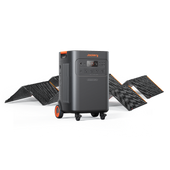











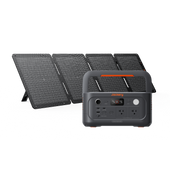



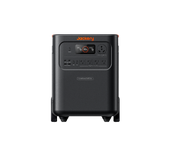
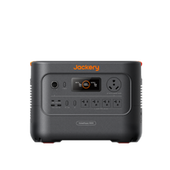





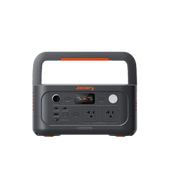





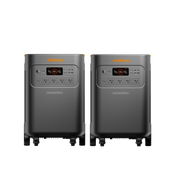
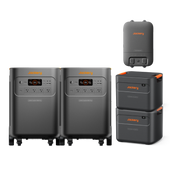





![[Add - on] Jackery Manual Transfer Switch for Explorer 5000 Plus - Jackery](http://www.jackery.com/cdn/shop/files/add-on-jackery-manual-transfer-switch-for-explorer-5000-plus-9017324.png?v=1754016782&width=170)
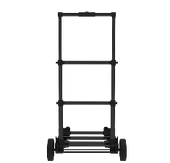
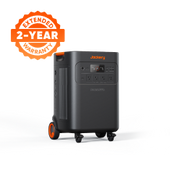
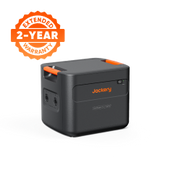
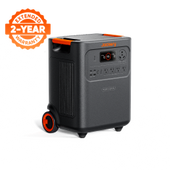
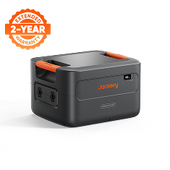
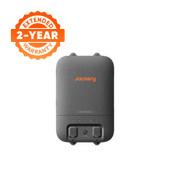



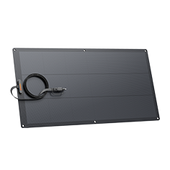
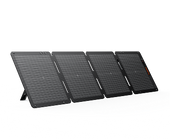




















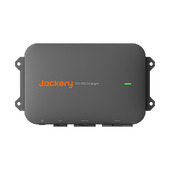




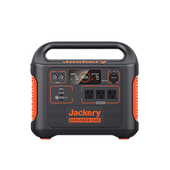






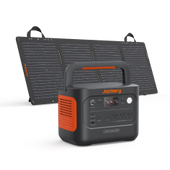
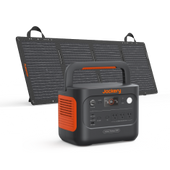






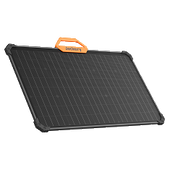

















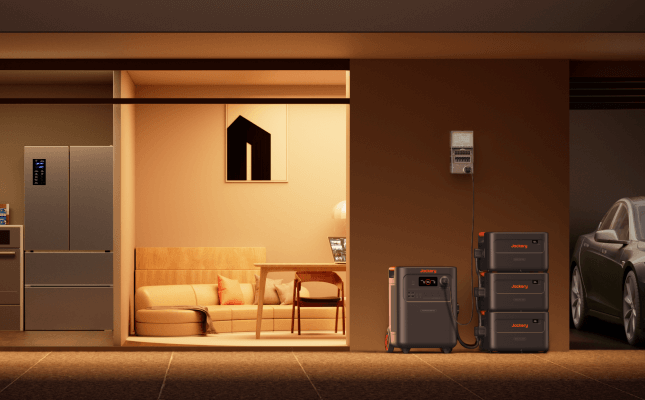


















![How to Prepare For a Tsunami [Complete Guide]](http://www.jackery.com/cdn/shop/articles/how-to-prepare-for-a-tsunami-complete-guide-3118540.jpg?v=1763486727)







Leave a comment